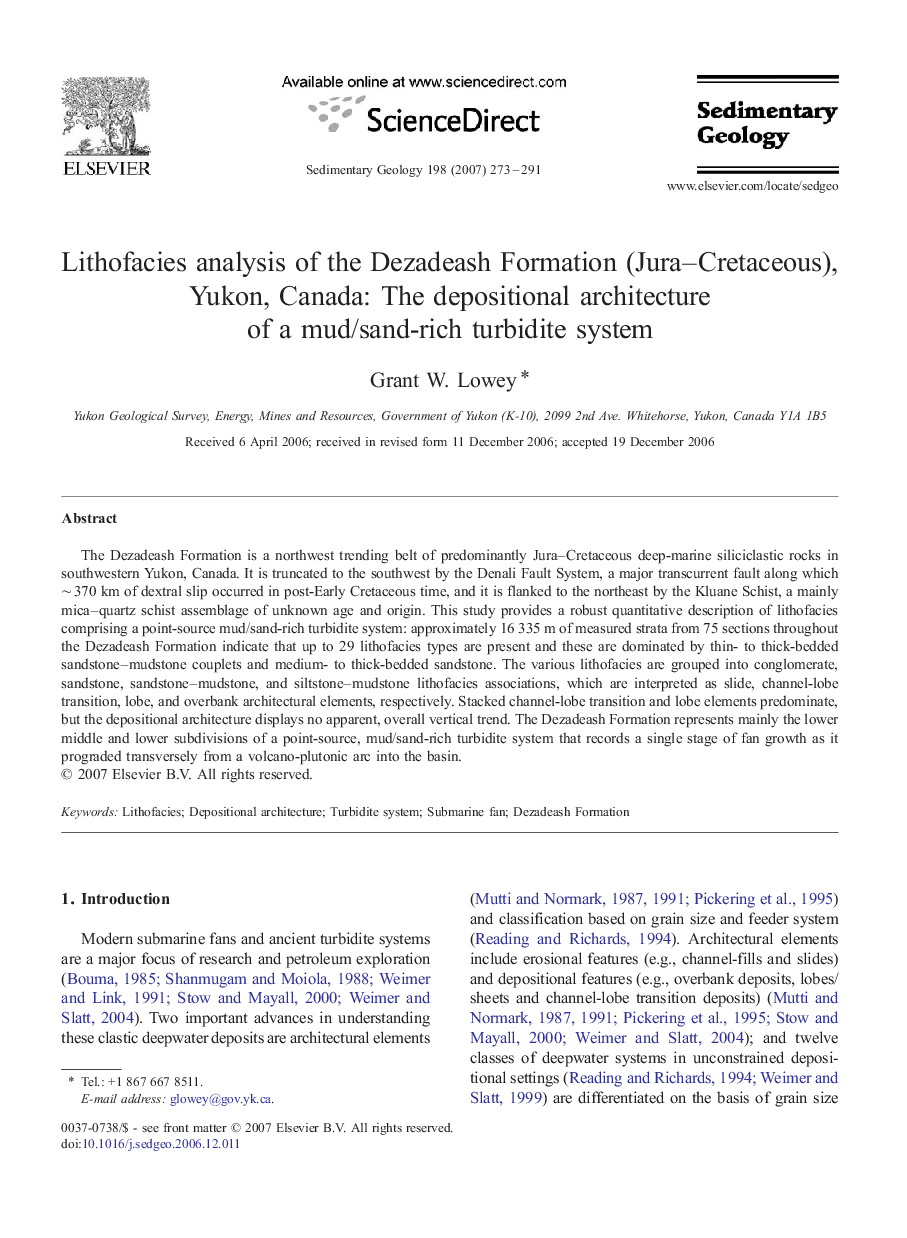| Article ID | Journal | Published Year | Pages | File Type |
|---|---|---|---|---|
| 4690875 | Sedimentary Geology | 2007 | 19 Pages |
The Dezadeash Formation is a northwest trending belt of predominantly Jura–Cretaceous deep-marine siliciclastic rocks in southwestern Yukon, Canada. It is truncated to the southwest by the Denali Fault System, a major transcurrent fault along which ∼ 370 km of dextral slip occurred in post-Early Cretaceous time, and it is flanked to the northeast by the Kluane Schist, a mainly mica–quartz schist assemblage of unknown age and origin. This study provides a robust quantitative description of lithofacies comprising a point-source mud/sand-rich turbidite system: approximately 16 335 m of measured strata from 75 sections throughout the Dezadeash Formation indicate that up to 29 lithofacies types are present and these are dominated by thin- to thick-bedded sandstone–mudstone couplets and medium- to thick-bedded sandstone. The various lithofacies are grouped into conglomerate, sandstone, sandstone–mudstone, and siltstone–mudstone lithofacies associations, which are interpreted as slide, channel-lobe transition, lobe, and overbank architectural elements, respectively. Stacked channel-lobe transition and lobe elements predominate, but the depositional architecture displays no apparent, overall vertical trend. The Dezadeash Formation represents mainly the lower middle and lower subdivisions of a point-source, mud/sand-rich turbidite system that records a single stage of fan growth as it prograded transversely from a volcano-plutonic arc into the basin.
